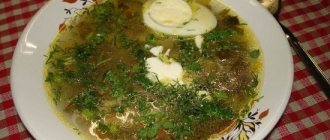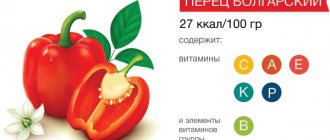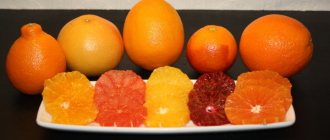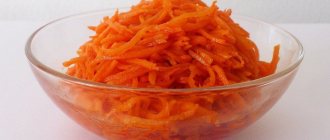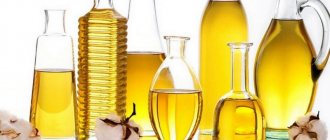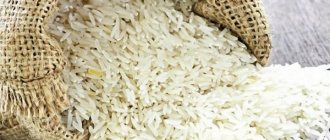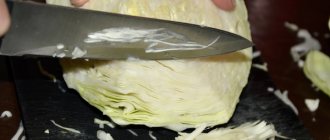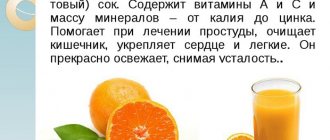How many calories:
=82 kcal.
Beef Goulash with Gravy (lots of gravy) - 82 calories. per 100 grams.
100 grams of the product “Beef goulash with gravy” contains:
- Water - 43 g;
- Evaporation of water during cooking - 21 g;
- Beef - 21 g;
- Onion - 9 g;
- Sunflower oil - 3 g;
- Flour - 1 g;
- Salt - 1 g;
- Spices - less than 1 g;
Goulash according to the traditional recipe at the rate of 1 liter of water per 500 grams. beef. The meat is fried in a small amount of oil, transferred to a pan and simmered with water over low heat. Meanwhile, the onion is fried and added to the meat. The flour is then fried and added to the meat (to thicken the gravy). Add salt and spices and simmer everything until done over low heat for about an hour. The calorie content of the dish is taken into account with the gravy (that is, as you add it to the side dish on the plate).
Chemical composition of beef goulash
Beef goulash, the calorie content of which depends on the components in the composition, contains vitamins, minerals, mono- and polyunsaturated fatty acids valuable for the body, which are responsible, among other things, for normalizing cholesterol levels. The amount of nutrients may vary slightly depending on the type of meat.
There are 3 varieties in total:
- highest (most valuable): contains the least amount of coarse fibers of connective tissue and cartilage, suitable for goulash; This variety includes: rump, tenderloin from the back or chest, rump;
- 1st grade : slightly coarser part (scapular and humeral);
- 2nd grade : front and back shanks, cut (more suitable for making soups).
The most nutritious meat is considered to be meat from animals under 20 months of age. Old beef is difficult to digest meat, especially for children and the elderly.
The table provides information on the content of vitamins, minerals and fatty acids in lean beef goulash:
| Amount per 100 g (in mg) | % of daily value | |
| Vitamins | ||
| A | 0.077 | 8.7% |
| IN 1 | 0.12 | 8% |
| AT 2 | 0.13 | 7.2% |
| AT 4 | 86 | 17.2 |
| AT 5 | 1.3 | 26% |
| AT 6 | 0.3 | 25% |
| AT 9 | 0.007 | 1.8% |
| AT 12 | 2.9 mcg | 68% |
| WITH | 0.9 | 1% |
| E | 0.6 | 4% |
| RR | 5.8 | 29% |
| Minerals | ||
| potassium | 307 | 12% |
| calcium | 17 | 1.7% |
| magnesium | 22 | 5.5% |
| sodium | 612 | 47% |
| phosphorus | 146 | 18% |
| iron | 1.6 | 8.9% |
| selenium | 0.031 | 56% |
| zinc | 6.9 | 62% |
| copper | 0.1 | 10.4% |
| Fats | ||
| Monounsaturated fatty acids | 3.91 g | 3.9% |
| Polyunsaturated fatty acids | 0.42 g | 0.4% |
| Cholesterol | 90 mg | 0.09% |
Benefits and harms
To make goulash as healthy as possible, it is recommended to choose lean meats from trusted suppliers. Unscrupulous farmers may feed animals with nutritional supplements to speed up growth and weight gain. As a result, hormones and stimulants accumulate in the meat. Low-fat goulash is an easily digestible dish that does not cause fermentation or stagnation.
When consumed in moderation, beef stew will benefit the body:
- as a source of protein and amino acids, it will help restore blood loss, hemoglobin levels, as well as strength for those whose profession involves complex physical work, athletes;
- consumption of the product in the postoperative period will help to gain muscle mass and restore the body as a whole;
- will prevent diseases of the musculoskeletal system due to the presence of collagen, the main building material of interarticular ligaments and cartilage;
- iron, zinc have a positive effect on the state of the cardiovascular system;
- B vitamins have a beneficial effect on the nervous system and help cope with stress;
- zinc, selenium stimulate brain activity, which is especially important for people engaged in heavy mental work;
- according to research by British scientists, when consuming up to 200 g of lean beef per day, the cholesterol level of an adult man is reduced by 20%;
- zinc and vitamin B2 prevent the appearance of deep wrinkles, strengthen the skin, and improve the condition of the hair.
Stewed lean beef is recommended to be included in the nutrition menu:
- when losing weight;
- diabetes mellitus: helps bring glucose levels back to normal, the glycemic index of beef is 0;
- for pancreatitis: protein will help in the restoration of damaged organs;
- with gastritis.
The recommended serving of beef stew per week is 150-200 g. Eating red meat too often, according to scientists, can be harmful and lead to the following adverse consequences.
Namely:
- early development of cardiovascular diseases;
- purine compounds in the composition lead to the development of gout, bone diseases, and urolithiasis;
- problems with the gastrointestinal tract.
Benefits of Beef Stew with Gravy
- Choline
is part of lecithin, plays a role in the synthesis and metabolism of phospholipids in the liver, is a source of free methyl groups, and acts as a lipotropic factor. - Vitamin B6
is involved in maintaining the immune response, processes of inhibition and excitation in the central nervous system, in the transformation of amino acids, the metabolism of tryptophan, lipids and nucleic acids, promotes the normal formation of red blood cells, and maintaining normal levels of homocysteine in the blood. Insufficient intake of vitamin B6 is accompanied by decreased appetite, impaired skin condition, and the development of homocysteinemia and anemia. - Vitamin B12
plays an important role in the metabolism and transformation of amino acids. Folate and vitamin B12 are interconnected vitamins that are involved in hematopoiesis. A lack of vitamin B12 leads to the development of partial or secondary folate deficiency, as well as anemia, leukopenia, and thrombocytopenia. - Vitamin E
has antioxidant properties, is necessary for the functioning of the gonads and heart muscle, and is a universal stabilizer of cell membranes. With vitamin E deficiency, hemolysis of erythrocytes and neurological disorders are observed. - Vitamin PP
is involved in redox reactions of energy metabolism. Insufficient vitamin intake is accompanied by disruption of the normal condition of the skin, gastrointestinal tract and nervous system. - Phosphorus
takes part in many physiological processes, including energy metabolism, regulates acid-base balance, is part of phospholipids, nucleotides and nucleic acids, and is necessary for the mineralization of bones and teeth. Deficiency leads to anorexia, anemia, and rickets. - Chlorine
is necessary for the formation and secretion of hydrochloric acid in the body. - Cobalt
is part of vitamin B12. Activates enzymes of fatty acid metabolism and folic acid metabolism. - Copper
is part of enzymes that have redox activity and are involved in the metabolism of iron, stimulates the absorption of proteins and carbohydrates. Participates in the processes of providing oxygen to the tissues of the human body. Deficiency is manifested by disturbances in the formation of the cardiovascular system and skeleton, and the development of connective tissue dysplasia. - Molybdenum
is a cofactor for many enzymes that ensure the metabolism of sulfur-containing amino acids, purines and pyrimidines. - Chromium
is involved in the regulation of blood glucose levels, enhancing the effect of insulin. Deficiency leads to decreased glucose tolerance. - Zinc
is part of more than 300 enzymes and is involved in the processes of synthesis and breakdown of carbohydrates, proteins, fats, nucleic acids and in the regulation of the expression of a number of genes. Insufficient consumption leads to anemia, secondary immunodeficiency, liver cirrhosis, sexual dysfunction, and the presence of fetal malformations. Research in recent years has revealed the ability of high doses of zinc to disrupt the absorption of copper and thereby contribute to the development of anemia.
still hide
You can see a complete guide to the healthiest foods in the “My Healthy Diet” app.
Contents of the BZHU
Beef goulash, the calorie content of which allows you to include the dish in the menu during a diet, is a nutritious dish.
The table shows an analysis of the protein, fat and carbohydrate content of goulash, taking into account the ingredients of the standard recipe:
| Product | Gram | Squirrels | Fats | Carbohydrates |
| Beef | 400 | 71.1 g | 47.9 g | |
| Onion | 30 | 0.3 | 0 | 2.7 |
| Carrot | 50 | 0.5 | 0 | 2.9 |
| Bulgarian pepper | 150 | 1.9 | 0 | 7.6 |
| Bay leaf | 2 | 0.1 | 0.2 | 0.9 |
| Ground pepper | 5 | 0.5 | 0.1 | 1.8 |
| Vegetable oil | 34 | 0 | 34 | 0 |
| Water | 150 | |||
| Salt | 10 | |||
| Total | 831 | 74.4 | 82,2 | 15,9 |
Goulash is not only tasty, but also healthy.
Composition of nutrients, BJU
Beef goulash with gravy (lots of gravy)
| For quantity: 100 grams | ||
| Calories — 82 | Calories from fat - 48 | |
| BJU | ||
| Total fat content | 5.38g | |
| Saturated | 1.11g | |
| Polyunsaturated | 1.33g | |
| Monounsaturated | 2.58g | |
| Cholesterol | 18mg | |
| Total carbohydrate content | 1.82g | |
| Dietary fiber | 0.22g | |
| Sugar | 0.38g | |
| Squirrels | 6.42g | |
| Vitamins and microelements | ||
| A - 0.74 µg | C - 3.59 mg | |
| B-6 – 0.13 mg | B-12 - 0.6 µg | |
| D - 0.03 µg | E - 1.5 mg | |
| Calcium 9mcg | Iron 0.69 mg | |
| Magnesium 7.73 mg | Zinc 1.33mg | |
| Potassium 94 mg | Sodium 304 mg | |
Distribution of calories for BJU:Carbohydrates (10%) Fats (59%) Proteins (31%) | ||
Calorie analysis
Depending on the set of ingredients, the calorie content of goulash differs.
The table shows a list of the most commonly found components in the recipe, indicating their calorie content:
| Ingredient | Recommended amount for recipe (in g) | Number of calories per serving (kcal) |
| Beef | 400 | 715 |
| Vegetable oil | 2 tbsp. l. (34 g) | 305 |
| Salo | 100 | 774 |
| Onion | 30 | 12.1 |
| Tomatoes | 10 | 18 |
| Carrot | 50 | 13.4 |
| Tomato paste | 30 | 18.5 |
| bell pepper | 150 | 37.9 |
| Sour cream | 40 | 46 |
| Garlic | 12 | 17.16 |
| Sweet paprika (ground) | 15 | 3.8 |
| Ground black pepper | 5 | 10.7 |
| Bay leaf | 2 | 5.7 |
| Flour | 30 | 99 |
Energy value of 100 g of beef goulash
The calorie content of beef goulash per 100 g serving with a minimum set of ingredients will be 136 kcal.
Beef Goulash. Calorie content of the finished dish.
If the composition includes more high-calorie foods (lard, flour, sour cream), then the energy value of 100 g can reach up to 246 kcal.
Beef goulash with tomato sauce - step-by-step recipe with photos
A step-by-step method for preparing delicious and healthy beef goulash.
Step 1:
Chop onions, carrots, greens.
Step 2:
Heat the oil in a frying pan (I use a wok, as it is convenient for frying and stewing). Fry the meat over medium heat until all the juice has evaporated. The meat should fry a little, but you need to be careful not to burn it, since the beef is dark and the crust is not completely visible. Focus on the smell; if you smell fried meat, it means it’s ready.
Step 3:
Add the onion, fry it along with the meat, stirring continuously.
Step 4:
Once the onions are fried, add the carrots.
Step 5:
Once the carrots have changed color, you can add salt, flour and spices. Fry a little.
Step 6:
Add the tomato and fry well. If the tomato is not cooked through, the dish will be too sour, which can cause heartburn.
Step 7:
Pour boiling water so that the water covers the meat, mix well and use a spatula to remove all the oil, roasted meat and vegetables from the day so that all these ingredients dissolve evenly in the water. Cover with a lid, put on the quietest heat and leave to simmer for 30 or even 40 minutes. From time to time you will need to look under the lid and stir the dish.
Step 8:
So, the water mixed with all the ingredients and turned into a thick gravy. You can turn off the heat and let it sit for a while under the lid, or you can serve it immediately.
Step 9:
Bon appetit!

